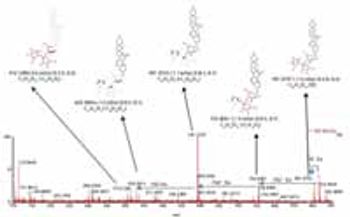
Non-targeted metabolite profiling by ultrahigh-performance liquid chromatography coupled with mass spectrometry (UHPLC–MS) is a powerful technique to investigate the influence of genetic and environmental influence on metabolic phenotype in plants. The approach offers an unbiased and in-depth analysis that can reveal molecular markers of desirable phenotypic traits which can be complementary to genetic markers in plant breeding efforts. Here, the power of non-targeted metabolite profiling is illustrated in a study focused on the determination of molecular markers in malting barley that are predictive of desirable malting quality for brewing applications.




















